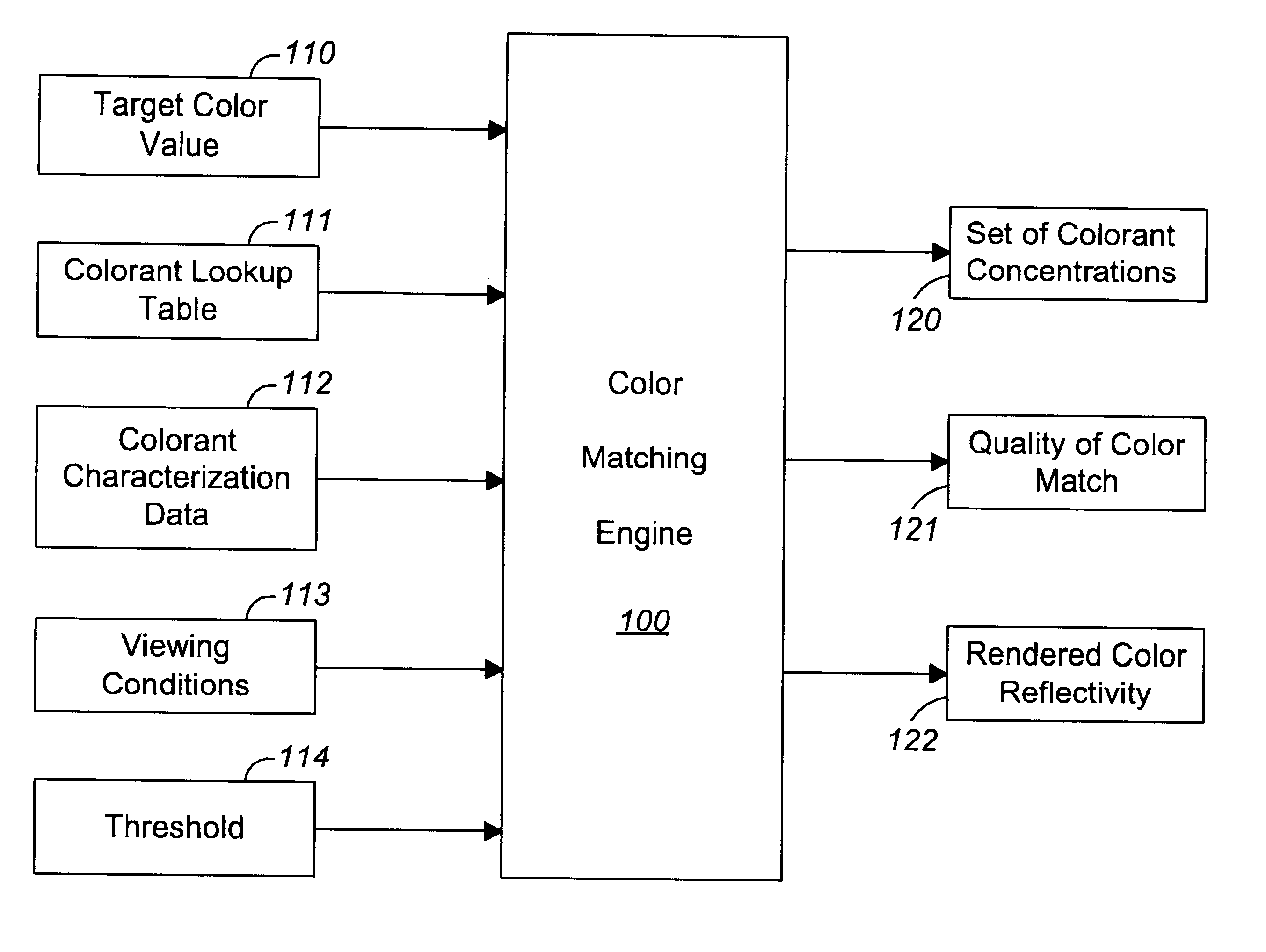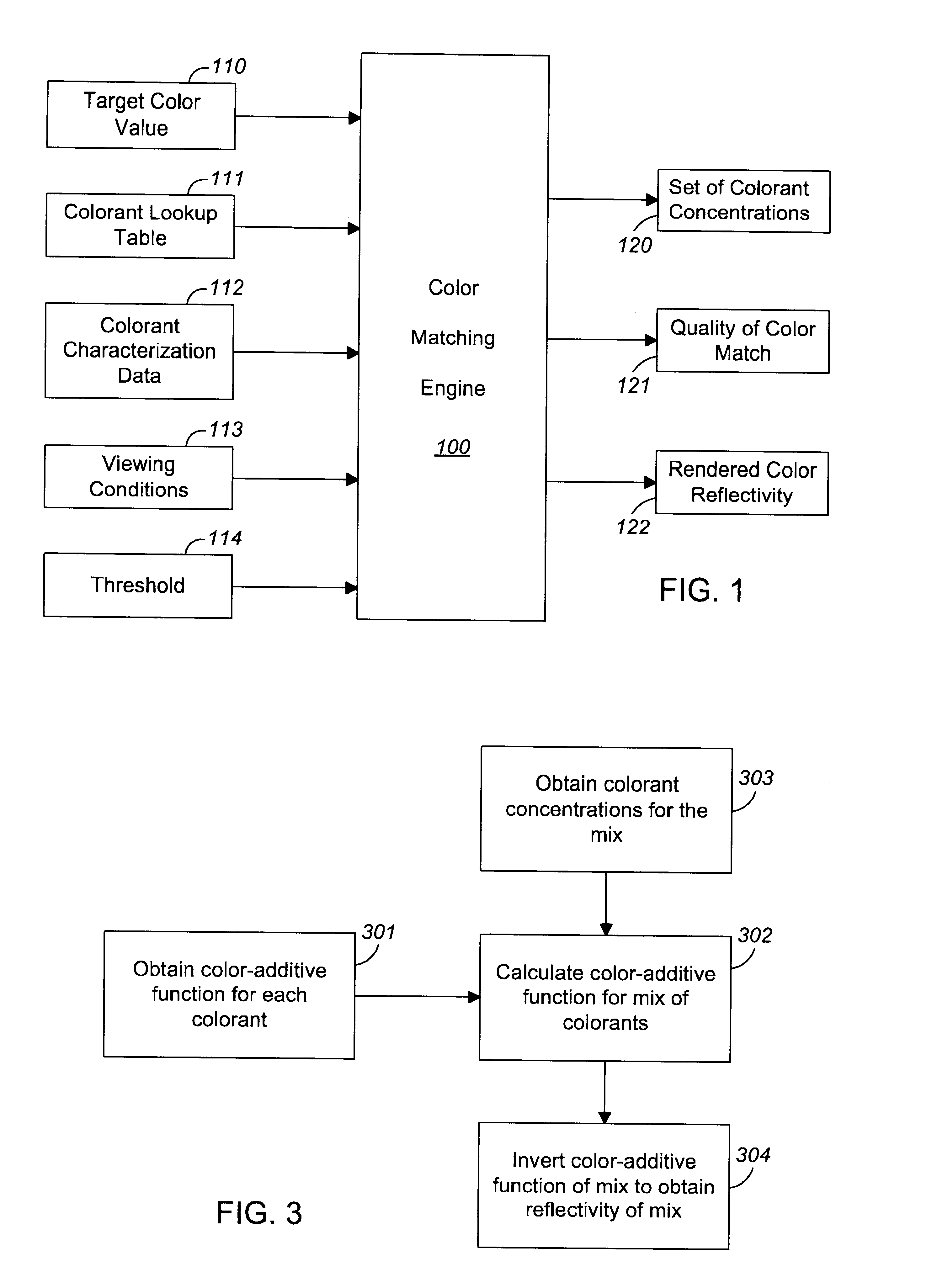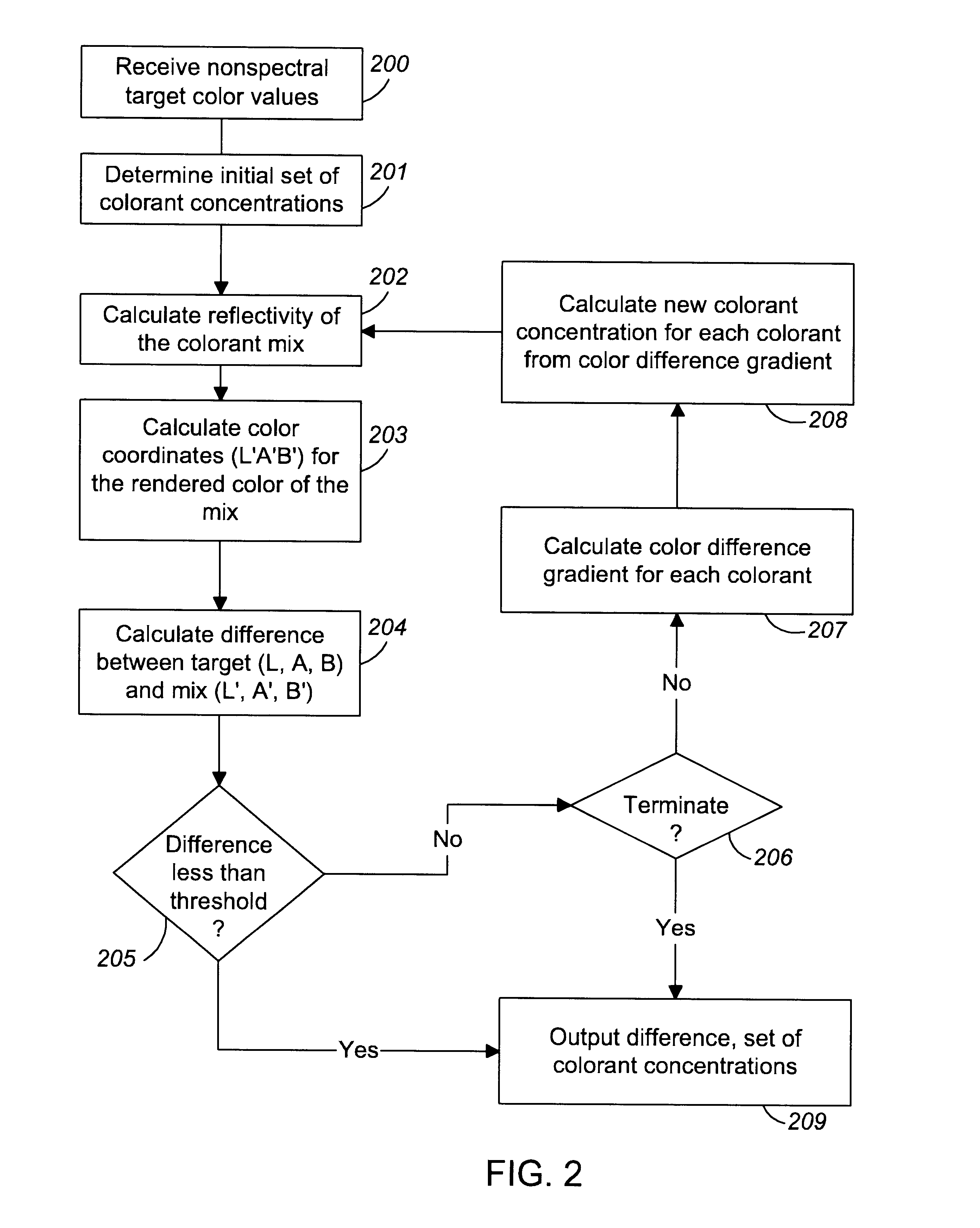Spectral color matching to a device-independent color value
a color value and color matching technology, applied in the field of color matching and color management systems, can solve the problems of difficult to obtain accurate interpolation, use of conventional color management techniques, and difficult to calculate colorant concentrations that closely
- Summary
- Abstract
- Description
- Claims
- Application Information
AI Technical Summary
Benefits of technology
Problems solved by technology
Method used
Image
Examples
Embodiment Construction
FIG. 1 is a block diagram depicting an implementation of a system for obtaining a spectral color match for a target color using a set of any number of transparent colorants. For example, the set of colorants can be a set of CMYK inks or a set of Pantone.RTM. Hexachrome.RTM. inks. (Hexachrome is a six-color printing process developed by Pantone, Inc. of Carlstadt, N.J.) Other colorants can also be used; and the method for matching the target color by a mixture of colorants is not limited by, nor dependent upon, the number of colorants or the colors of the colorants used.
As shown in FIG. 1, the system has a color matching engine 100 receiving as input a target color value 110, an optional colorant lookup table 111, colorant characterization data 112, an optional viewing conditions 113, and a threshold (or target error value) 114. The color matching engine 100 first calculates and then outputs a set of colorant concentrations 120 that defines a mixture of colorants that produces a colo...
PUM
 Login to View More
Login to View More Abstract
Description
Claims
Application Information
 Login to View More
Login to View More - R&D
- Intellectual Property
- Life Sciences
- Materials
- Tech Scout
- Unparalleled Data Quality
- Higher Quality Content
- 60% Fewer Hallucinations
Browse by: Latest US Patents, China's latest patents, Technical Efficacy Thesaurus, Application Domain, Technology Topic, Popular Technical Reports.
© 2025 PatSnap. All rights reserved.Legal|Privacy policy|Modern Slavery Act Transparency Statement|Sitemap|About US| Contact US: help@patsnap.com



